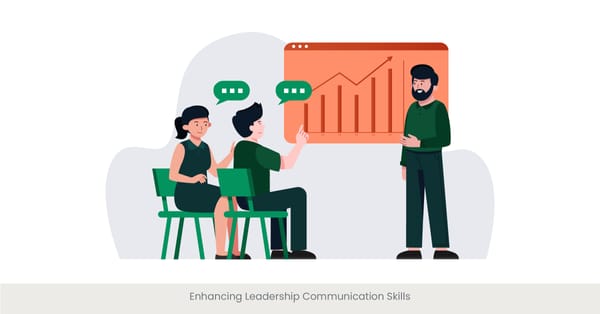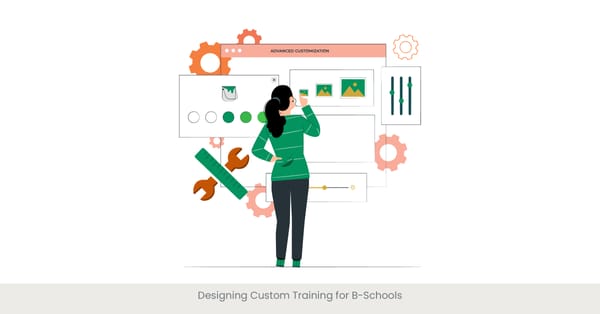
Conducting Needs Assessments and Customizing Training Programs
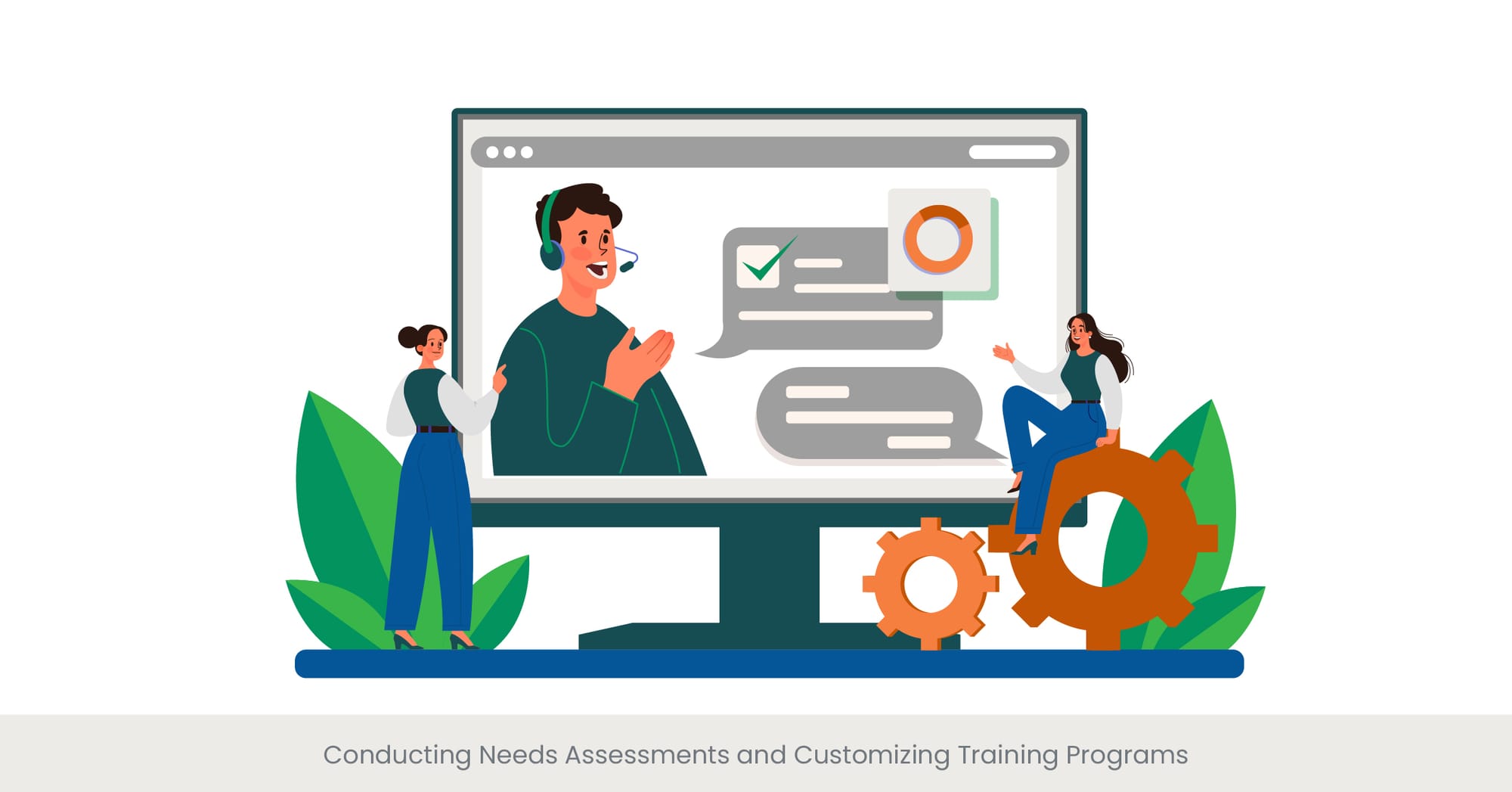
Introduction: Tailoring Training to Meet Specific Needs
The foundation of any effective corporate training initiative begins with a thorough needs assessment. This process involves identifying the specific skills, knowledge gaps, and learning objectives that are unique to each organization. By conducting detailed evaluations, companies like Ink PPT corporate training are able to design customized training solutions that align perfectly with the client's operational goals and workforce capabilities. This initial step ensures that the training program is not just informative but also fully integrated with the company’s strategic objectives.
Background Information: The Importance of Customization in Training
Customized training solutions have emerged as a pivotal component of corporate development strategies. Traditional, one-size-fits-all training modules are often inadequate due to the diverse nature of skills and competencies required in different departments. Customization involves a deep dive into the organization's culture, workflow, and challenges. Ink PPT corporate training excels in molding executive presentation training bootcamps to address these distinct needs, thereby enhancing the efficacy of the training delivered.
Real-World Applications: Case Studies and Success Stories
In practice, the customization of training programs can lead to substantial improvements in productivity and employee satisfaction. For instance, a corporate presentation workshop tailored for a tech giant focused on enhancing presentation skills among its mid-level managers. The training program design included specific case studies relevant to the tech industry, fostering better understanding and relatability. Another example is a series of executive presentation skills training sessions conducted for a financial firm, where the training program design was aligned with laid out objectives specific to financial reporting and compliance, resulting in improved accuracy and presentation skills among participants.
References and External Validation
Several studies highlight the effectiveness of tailored training programs. According to a report by the Association for Talent Development, customized training solutions are directly correlated with increased employee performance and engagement. Another study published in the Journal of Workplace Learning notes that organizations that invest in custom training frameworks see a significant boost in innovation and skills application. These findings underscore the importance of aligning training content with specific corporate needs and industry demands.
Developing Tailored Curriculum and Learning Objectives

Introduction: Crafting Curricula That Resonate
Developing a tailored curriculum for corporate clients goes beyond mere training; it involves creating a learning journey that is meticulously aligned with the organization's long-term goals and immediate needs. This process ensures that each module and session is crafted to enhance specific competencies that are directly applicable to the participants' roles. For companies like Ink PPT, this means engaging in a detailed analysis of the clients' business environment and expectations to develop a curriculum that not only educates but also empowers.
Background Information: The Art and Science of Curriculum Design
Effective curriculum development is rooted in understanding the end-user – the employees. This requires an analysis of their current skill levels, learning styles, and professional objectives. A tailored curriculum involves the integration of company-specific case studies, realistic scenarios, and relevant challenges that engage learners and stimulate their thinking. Techniques such as mind mapping and the use of targeted presentation skills are essential tools used by organizations to ensure that the learning objectives are both achievable and aligned with business strategies.
Real-World Applications: Transformative Learning Experiences
The practical application of this expertise and a tailored curriculum can be seen in how Ink PPT structured a training program for a leading pharmaceutical company. By focusing on intricate concepts like regulatory compliance and drug development processes, the curriculum included specialized workshops and presentations that enhanced understanding and retention among the trainees. The use of real-life examples and role-playing exercises enabled participants to grasp complex information effectively, making the training not only informative but also highly engaging.
References and External Validation
Research supports the effectiveness of tailored educational programs. A study in the "Journal of Corporate Learning" found that customized curricula could increase knowledge retention by up to 60% compared to standard training sessions. Another research highlighted in the "International Review of Industrial and Organizational Psychology" concludes that tailored learning objectives are critical in achieving higher engagement and motivation among employees, ultimately leading to better overall performance and productivity.
Providing On-Site Workshops and Training Sessions
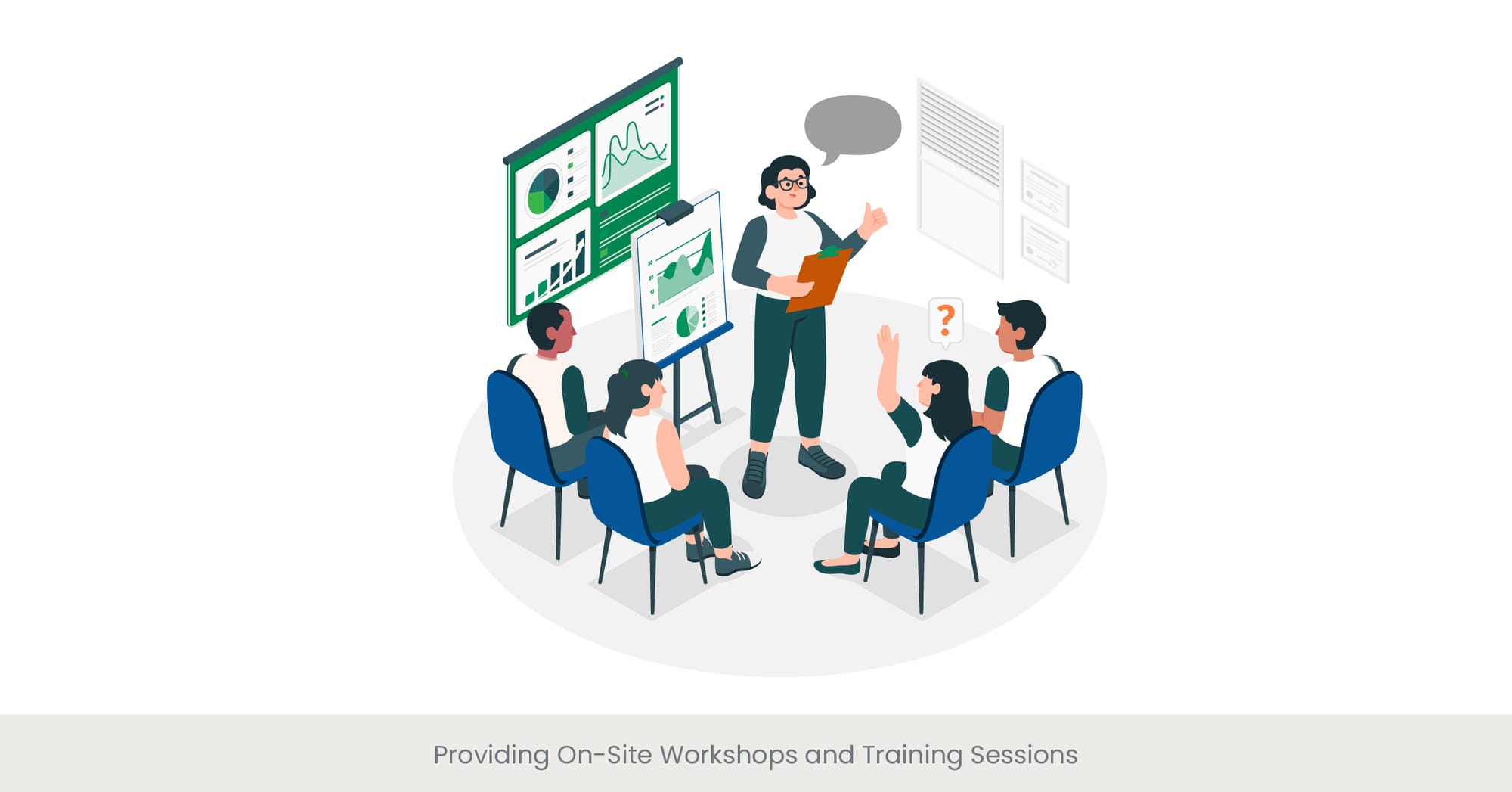
Introduction: Engaging Directly with the Workforce
On-site workshops and training sessions bring the learning experience directly to the company's doorstep, facilitating real-time interaction and engagement. This personalized approach allows trainers from organizations like Ink PPT to tailor their delivery to the immediate reactions and feedback of the participants. On-site sessions provide a dynamic environment where employees can learn through direct interaction, making it easier to address specific concerns and adjust the pace and focus of training to suit the audience’s needs.
Background Information: The Value of In-Person Training
While virtual training platforms have gained popularity, the impact of in-person, on-site training remains unparalleled, especially when discussing advanced presentation skills and executive presentation training. The immediate presence offer expertise of a skilled trainer helps to foster a collaborative learning atmosphere that encourages open communication and active participation. This setup is particularly effective for sessions that require hands-on practice, such as public speaking or intricate software use like PowerPoint presentation services.
Real-World Applications: Tailored Sessions in Action
A notable example of the effectiveness of on-site training was when Ink PPT conducted a series of corporate presentation workshops for leaders of a multinational corporation. The workshops were designed to enhance presentation skills across various levels of the organization, from senior leaders to newer employees. The sessions included live feedback, peer reviews, and group discussions, which helped in building confidence and honing the skills necessary for impactful presentations.
References and External Validation
The efficacy of on-site training is well-documented. According to a study published by the Corporate Executive Board, companies that incorporate on-site training sessions report a 25% increase in employee performance compared to those that rely solely on off-site or virtual training methods. Furthermore, feedback collected from participants consistently highlights the benefits of real-time interactions and the ability to immediately apply learned techniques in a familiar setting, proving that the investment in on-site training can yield substantial returns in workforce capability and satisfaction.
Offering One-on-One Coaching and Skill Development
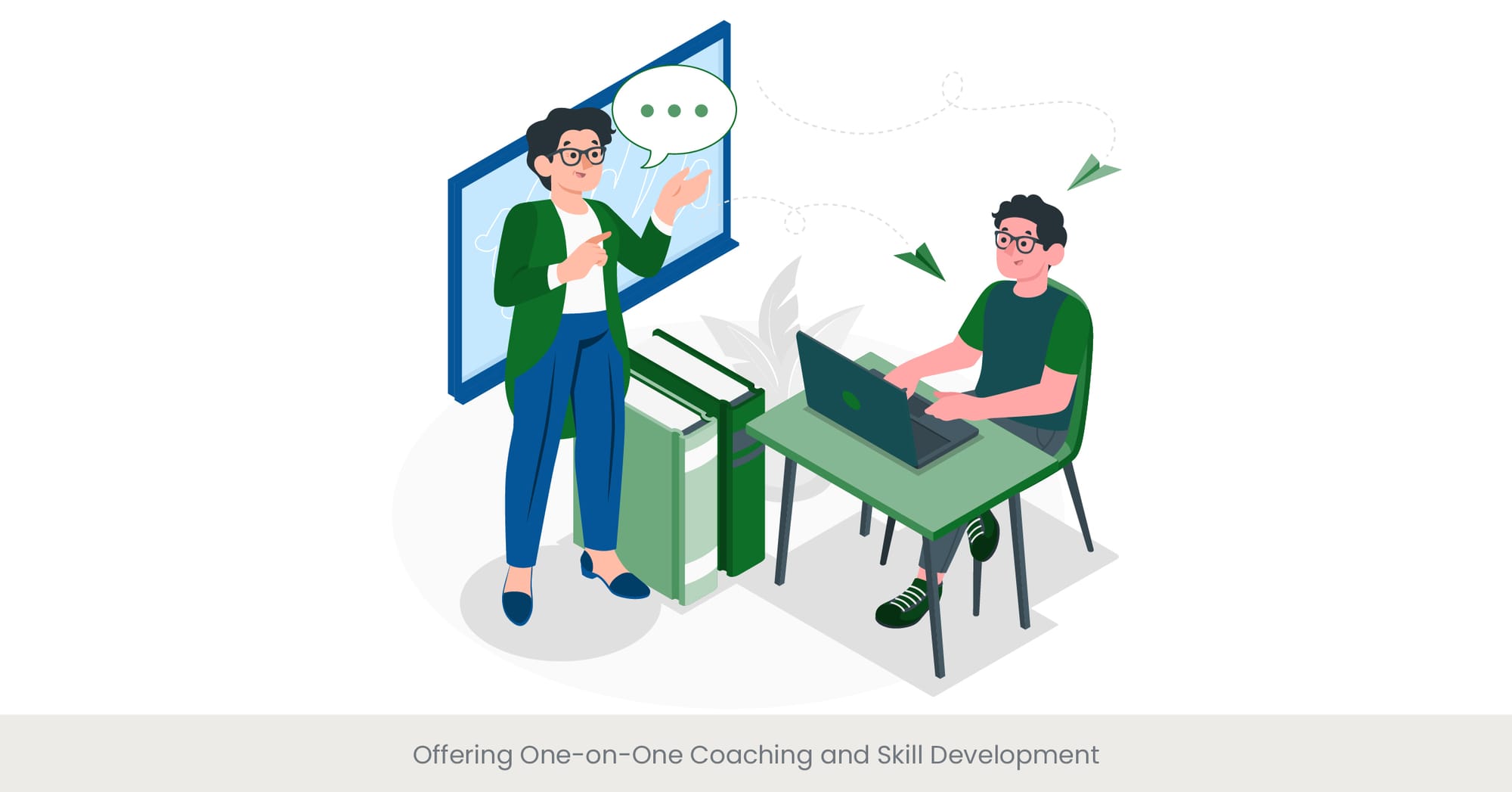
Introduction: Personalizing the Learning Experience
One-on-one coaching represents a significant step forward in personal and professional development within the corporate training sphere. It allows for a highly personalized approach to the skill set development, where each session can be tailored to meet the individual needs and challenges of the participant. Ink PPT specializes in providing executive presentation training bootcamps that include personal coaching to ensure that each participant can maximize their learning potential and directly apply new skills in their daily roles.
Background Information: The Impact of Individual Attention
Personal coaching sessions are instrumental in deepening the understanding of specific competencies, such as communication skills or leadership abilities. These sessions provide a safe space for individuals to explore their weaknesses and strengths with the guidance of an experienced coach. The focused attention helps in uncovering hidden potential and overcoming personal barriers, which can often be missed in larger group settings.
Real-World Applications: Case Studies of Success
For example, a one-on-one coaching program implemented by Ink PPT for a senior executive at a large tech company focused on developing advanced presentation skills to enhance their public speaking capabilities. Over several sessions, the executive was able to refine their approach to making presentations themselves, learning to engage audiences more effectively and handle unexpected situations with greater confidence. The personalized feedback and targeted exercises resulted in a noticeable improvement in their performance during high-stakes meetings.
References and External Validation
The effectiveness of one-on-one coaching is supported by numerous studies. Research published in the "Journal of Education for Business" shows that personalized coaching leads to a 40% increase in learning retention compared to traditional group training methods. Additionally, a survey conducted by the International Coaching Federation found that 86% of companies who invested in personal coaching reported a full return on their investment, citing significant improvements in employee satisfaction and productivity.
Integrating Company-Specific Examples and Case Studies

Introduction: Enhancing Relevance through Customized Content
Integrating company-specific examples and case studies into training programs is crucial for making learning relevant and impactful. This approach allows trainers to tailor content that resonates directly with the unique challenges and operational realities of the business. Ink PPT utilizes this strategy in its corporate presentation workshops, ensuring that every example and case study is directly applicable to the client’s industry, enhancing the learning experience and making it significantly more engaging and relatable for participants.
Background Information: The Power of Contextual Learning
Contextual learning through customized case studies and examples helps bridge the gap between theory and practice. It facilitates a deeper understanding and retention of knowledge by showing the participants learn how theoretical concepts are applied in real-world scenarios specific to their company. This method also promotes critical thinking and problem-solving skills, as the participants learn they are often tasked with navigating complex, real-life situations that mirror their daily challenges at work.
Real-World Applications: Tailored Examples in Action
A compelling example of this approach in action is when Ink PPT developed a series of tailored training sessions for a retail giant, focusing on customer engagement and service excellence. The training incorporated detailed case studies of past sales events and customer interaction scenarios, providing employees with insights into successful strategies, key messages and common pitfalls. These sessions helped the team develop more effective communication skills and understanding consumer behaviour, leading to an observable improvement in customer satisfaction rates.
References and External Validation
Evidence supporting the effectiveness of using company-specific case studies in training is robust. According to a study in the "Harvard Business Review," training programs that utilize customized case studies achieve up to 50% higher engagement rates compared to those using generic content. Additionally, a report from the Educational Research Journal suggests that such integrative methods can enhance problem-solving skills by 35%, as they allow learners to apply knowledge in contexts similar to their own operational environments.
Aligning Training with Corporate Culture and Values
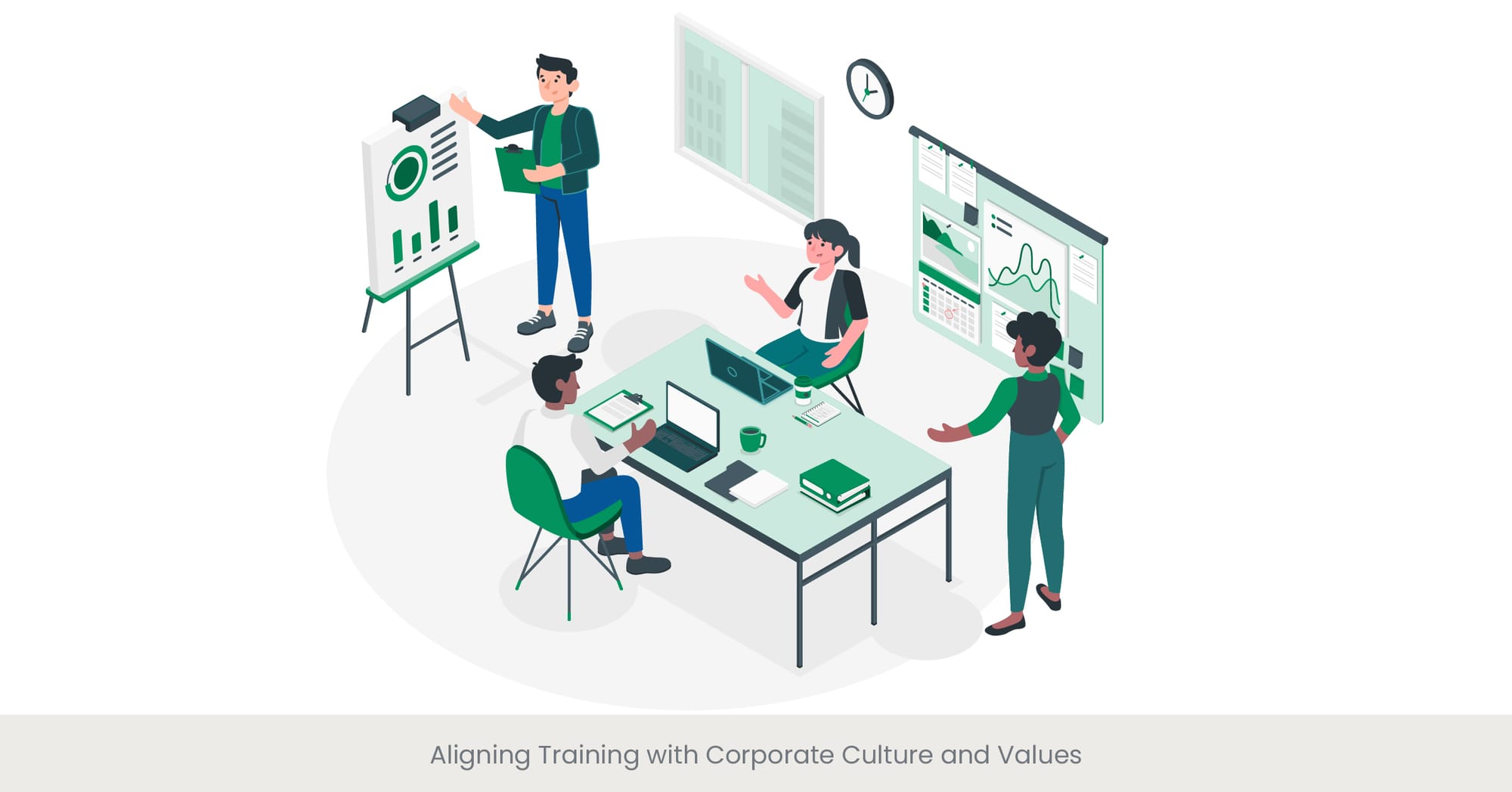
Introduction: Harmonizing Training with Organizational Identity
Effective training programs do more than impart skills; they also align closely with an organization's culture and core values. This alignment ensures that the training not only enhances skills but also reinforces the behaviors and attitudes that define the company. Ink PPT excels in integrating these elements into its executive presentation training bootcamps, creating a seamless blend of skill enhancement and cultural reinforcement that drives organizational success.
Background Information: The Significance of Cultural Alignment
When training is aligned with corporate culture and values, it resonates more deeply with participants, fostering a sense of belonging and commitment to the organization’s goals. This strategic alignment helps in cultivating a workforce that is not only skilled but also deeply invested in the company’s vision and values. Such training programs are tailored to echo the unique ethos of the company, ensuring that every session reinforces the principles that the company stands for.
Real-World Applications: Culture-Centric Training Initiatives
For instance, a customized training solution designed and developed by Ink PPT for a leading financial services firm focused on the principles of transparency and client trust. The training modules were crafted to enhance understanding and implementation of these values through every aspect of the company’s operations, from client interactions to internal communications. This alignment helped in strengthening trust both within the team and with their clients, leading to enhanced business outcomes.
References and External Validation
The benefits of aligning training with corporate culture are well-documented. A study published in the "Journal of Business Ethics" found that companies that integrate their core values into training programs see a significant increase in employee loyalty and job satisfaction. Moreover, a report by the Society for Human Resource Management indicates that culturally aligned training programs can increase employee retention rates by up to 30%, underscoring the critical role of cultural integration in successful training initiatives.
Incorporating Real-Life Scenarios and Role-Playing Exercises

Introduction: Bringing Learning to Life
Incorporating real-life scenarios and role-playing exercises into training programs provides participants with a practical and immersive learning experience. These methods allow learners to apply theoretical knowledge in simulated environments, making the learning process both interactive and impactful. Ink PPT integrates these techniques into its corporate presentation workshops, offering a dynamic and interactive way to practice new skills and refine old ones in a controlled, feedback-rich setting.
Background Information: The Effectiveness of Experiential Learning
Experiential learning through real-life scenarios and role-playing exercises enables participants to experience firsthand the complexities and nuances of real-world situations. This method is particularly effective in developing soft skills such as negotiation, problem-solving, and leadership. It allows participants to experiment with different strategies and receive immediate feedback, which is essential for learning and improvement.
Real-World Applications: Scenario-Based Training Successes
A notable instance where Ink PPT successfully applied these methods was during a training program for a major telecommunications company. The program included role-playing sessions that simulated customer service calls, including dealing with difficult customers and managing unexpected situations. These exercises helped employees improve their communication skills and customer engagement techniques, significantly reducing conflict and enhancing customer satisfaction.
References and External Validation
Studies validate the benefits of incorporating role-playing and scenario-based exercises into training. According to research published in the "Journal of Applied Psychology," simulations and role-playing significantly enhance the transfer of skills to the workplace, with improvements noted in both individual performance and team collaboration. Further, a review in the "Educational Researcher" highlights that learners who engage in these practices tend to develop higher levels of empathy and better decision-making skills compared to those who do not participate in such activities.
Measuring Training Impact and Effectiveness
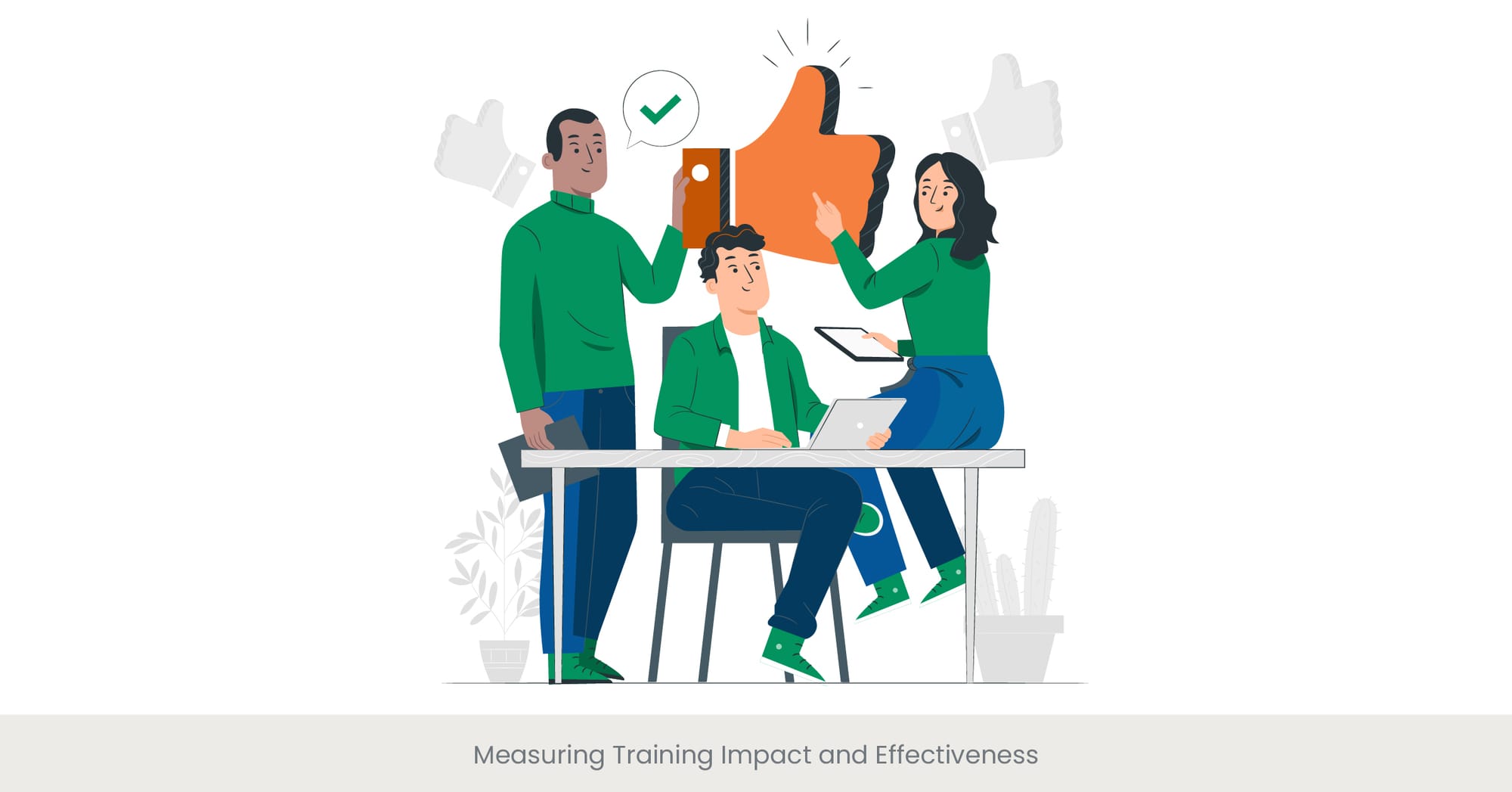
Introduction: Assessing the Value of Training Investments
Measuring the impact and effectiveness of training programs is crucial for determining their value and identifying areas for improvement. Effective assessment strategies provide tangible data that can help organizations adjust their training methods and content to better meet their objectives. Ink PPT employs rigorous evaluation techniques in its executive presentation training bootcamps, ensuring that each training initiative not only meets but exceeds client expectations for learning and development.
Background Information: The Science of Training Evaluation
Training evaluation typically involves a mix of quantitative and qualitative methods to assess participant learning, behavior change, and the training’s impact on business outcomes. This might include pre- and post-training assessments, feedback surveys, observational methods, and performance metrics. Accurately measuring these aspects allows organizations to understand the effectiveness of the training and its return on investment, providing critical insights into how training sessions influence overall business performance.
Real-World Applications: Effective Evaluation Techniques
For instance, following a series of corporate presentation workshops delivered by Ink PPT, a multinational corporation implemented a comprehensive feedback system. This system collected data from participants immediately after the presenting training and again several months later to gauge the long-term application of skills. The results demonstrated significant improvements in presentation skills across various departments, affirming the effectiveness of the training and guiding future training strategies.
References and External Validation
The importance of training evaluation is well-supported by academic research and industry practice. A study in the "Journal of Organizational Behavior" found that organizations that systematically evaluate training programs are more likely to achieve higher efficiency and better alignment with their strategic goals. Additionally, the American Society for Training and Development highlights that consistent evaluation is key to maintaining high standards in training delivery and ensuring that training adapts to the evolving needs of the business.
Soliciting Feedback and Iterating on Training Programs
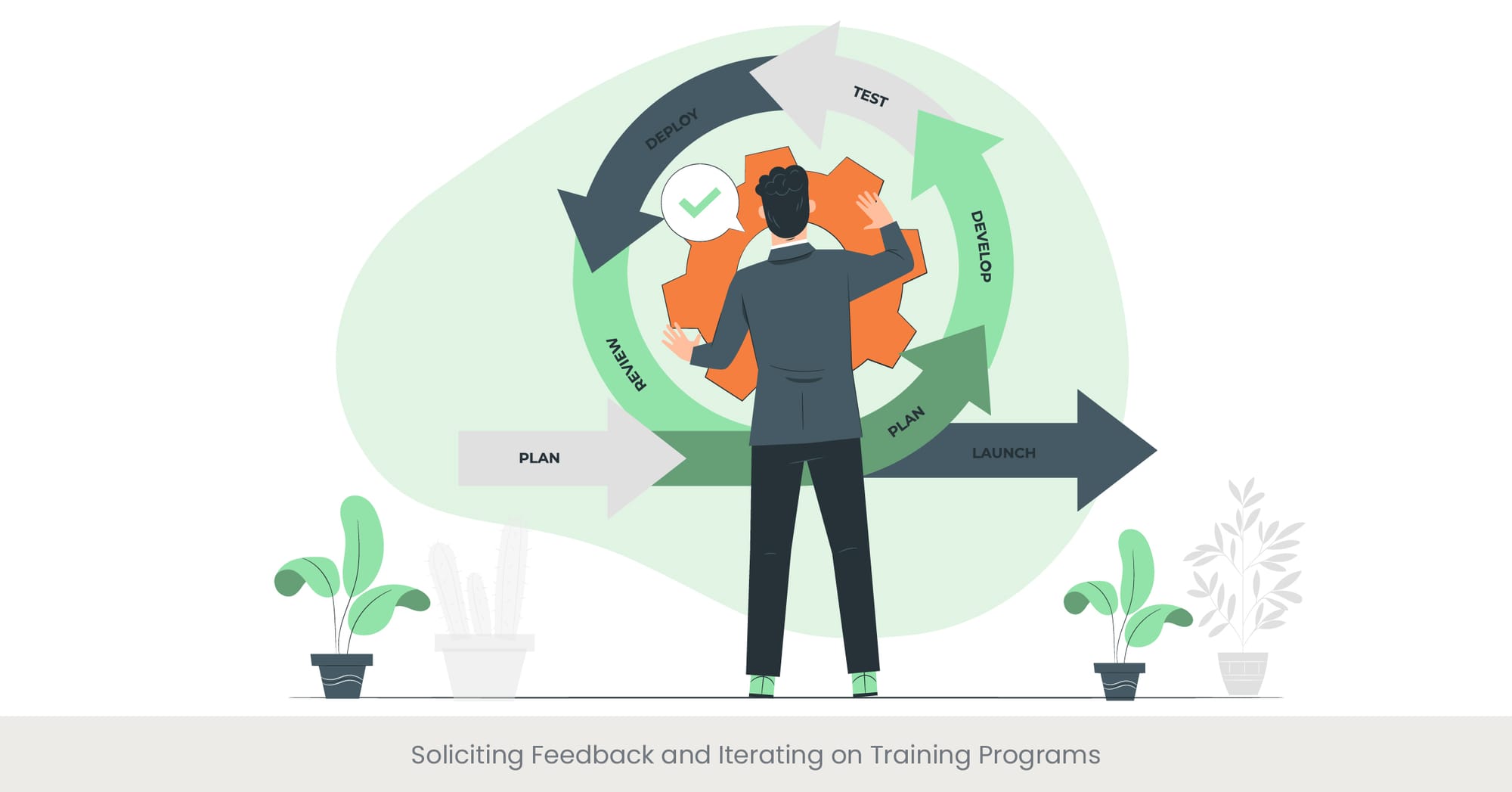
Introduction: Enhancing Training Through Continuous Feedback
Continuous improvement in training programs is crucial for maintaining relevance and effectiveness. Soliciting feedback from participants is a key strategy used by top training providers like Ink PPT to ensure that their courses meet and adapt to evolving needs. This feedback loop not only helps in refining the training content and methods but also fosters a collaborative environment where participants feel valued and understood.
Background Information: The Cycle of Feedback and Improvement
The process of soliciting feedback involves gathering detailed responses about various aspects of the training, including content relevance, presentation style, and the applicability of the skills taught. This information is then analyzed to identify trends and areas for improvement. Iterative adjustments based on this feedback ensure that the training remains effective and responsive to participant needs, thus enhancing the overall training efficacy and participant satisfaction.
Real-World Applications: Realizing the Benefits of Feedback
An example of this approach in action is a series of executive presentation design skills training sessions conducted by Ink PPT for a technology firm. After each session, participants were encouraged to provide feedback through digital surveys and informal group discussions. The insights gained from this feedback were crucial for adjusting the curriculum to better suit the needs of the participants, such as incorporating more advanced technological tools for presentation design, which significantly enhanced the learners' engagement and skill development.
References and External Validation
The effectiveness of iterative feedback in training programs is supported by numerous studies. For instance, research published in the "Journal of Workplace Learning" indicates that organizations that actively solicit and incorporate feedback into their training programs see a 50% higher retention of learned skills. Moreover, a report by the Education Technology Insights team shows that continuous improvement practices lead to a 30% increase in training program satisfaction among participants.
Building Long-Term Partnerships with Corporate Clients for Ongoing Training Needs
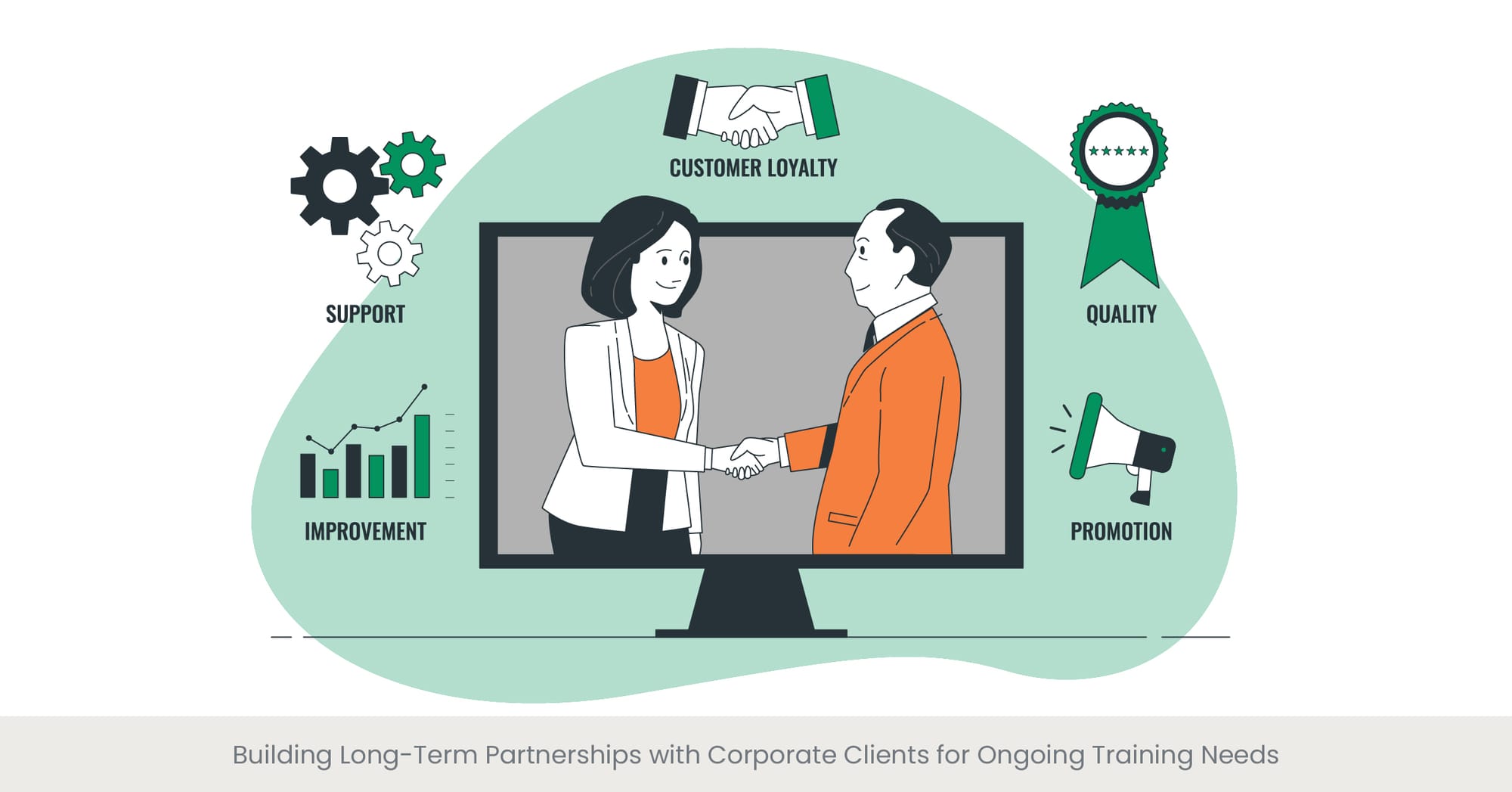
Introduction: Cultivating Lasting Relationships Through Training
Building long-term partnerships with corporate clients in the training sector is essential for sustained business success and continuous professional development of the workforce. Ink PPT excels in this area by a consistent client engagement by not only delivering high-quality training sessions but also by providing ongoing support and updates to their training programs. This approach ensures that clients receive consistent value and that their evolving training needs are met effectively.
Background Information: The Benefits of Long-Term Training Partnerships
Long-term training partnerships allow for a deep understanding of the client's business, culture, and goals, enabling trainers to fine-tune programs and deliver them that align closely with the client's strategic objectives. These relationships facilitate a more seamless implementation and integration of training solutions into the company’s development plans, ensuring that training remains relevant over time and adapts to changes within the company and the industry.
Real-World Applications: Success Stories of Partnership
One prominent example involves a partnership between Ink PPT and a leading consumer goods company, where ongoing training programs were established to continually develop the presentation and communication skills of their marketing and sales teams. Over several years, these programs have been regularly updated to include new marketing strategies and consumer behaviour insights, which have significantly enhanced the effectiveness of the teams' presentations to stakeholders and clients.
References and External Validation
The strategic advantage of long-term partnerships in corporate training is well-documented. A study in the "Journal of Business Strategy" shows that companies that engage in both long term success three-term relationships with training providers achieve more consistent growth in employee skills and overall business performance compared to those that switch providers frequently. Additionally, a survey by the Corporate Learning Network highlights that 78% of businesses with long-term training partnerships report higher employee satisfaction and retention rates.
Frequently Asked Questions
What are the 7 P's of effective presentation?
The 7 P's of effective presentation are: Preparation, Practice, Patience, Passion, Presence, Positivity, and Persuasion. Each element helps presenters engage their audience and deliver their message effectively.
What are the 3 organizational elements of every presentation?
The three organizational elements of every presentation are the Introduction, the Body, and the Conclusion. The Introduction sets the stage and outlines the presentation, the Body delivers the main content, and the Conclusion summarizes and calls the present audience to action.
Which course is best for presentation skills?
The best course for the presentation skills training often depends on specific needs, but generally, courses that offer interactive learning, real-life examples, and personalized feedback, such as Ink PPT’s executive presentation skills training, are highly effective.
How do you deliver a corporate presentation effectively?
To deliver an effective corporate presentation, one person should understand the audience, define clear objectives, make effective presentations, use engaging content and visuals, practice extensively, and handle Q&A sessions confidently.
How can customized training solutions benefit an organization?
Customized training solutions benefit an organization by aligning the training content with the organization's specific goals and needs, ensuring employees learn skills that are directly applicable to their roles, which enhances productivity and job satisfaction.
What role do real-life scenarios play in corporate training?
Real-life scenarios help participants understand how to apply theoretical knowledge in practical, work-related situations, enhancing their problem-solving skills and ability to handle unexpected situations.
Why is feedback important in training programs?
Feedback is crucial in training programs as it provides insights into the effectiveness of the training, allows for continuous improvement, and ensures that the training meets the evolving needs of the participants, customers business and the organization.
What strategies can be employed to ensure training aligns with corporate culture?
Strategies to ensure training aligns with corporate culture include involving leaders in training development solution design, reflecting core values and ethical standards in training content solution design, and customizing scenarios to reflect the organizational environment.
How does one measure the impact of training on employee performance?
The real impact of training on employee performance can be measured through various methods such as pre- and post-training assessments, performance metrics, employee feedback, and observing changes in productivity and job effectiveness.
What are the advantages of building long-term partnerships with training providers?
Building long-term partnerships with training providers offers numerous advantages, including customized training solutions that evolve with the company, consistency in training quality, and often, more favorable financial terms. It also helps the provider gain a deeper understanding of the company's long-term strategic goals.



%20(1).jpg)
%20(1).jpg)
